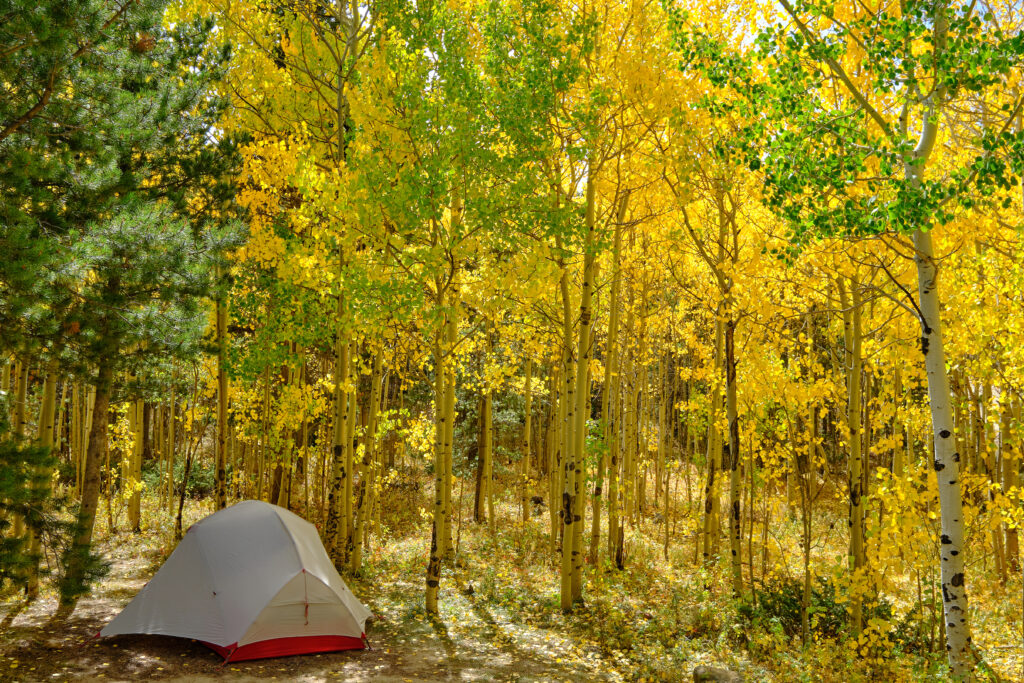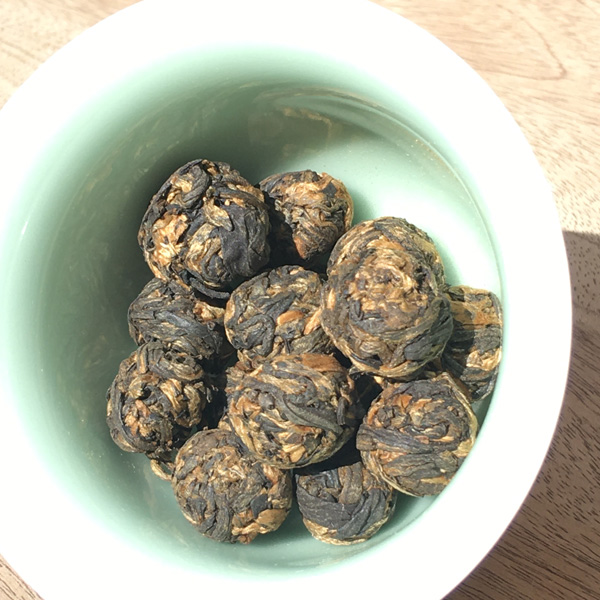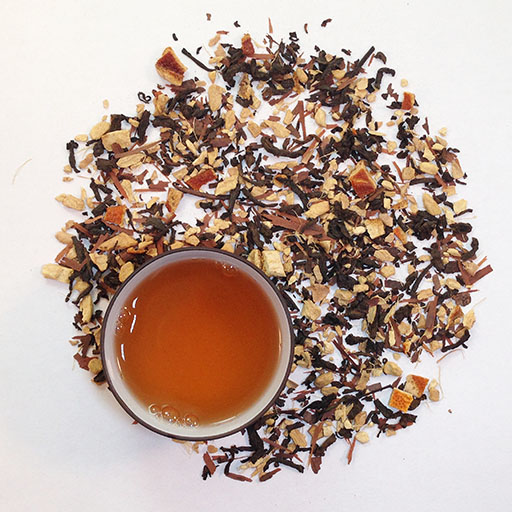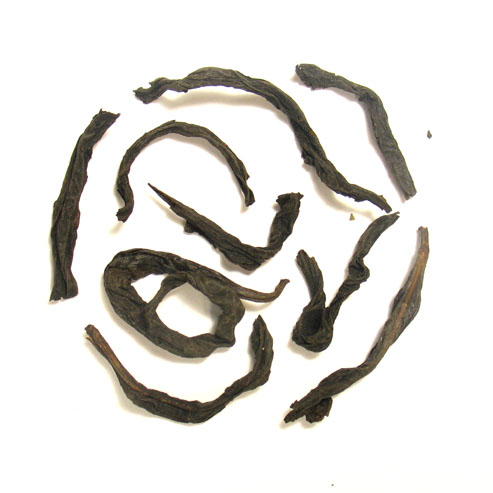Invite Earthy Teas Along For Leaf-Peeping Adventures
This summer along Colorado’s Front Range sizzled. It’s still here—fall doesn’t begin until the Autumn Equinox, on September 23—and the heat’s grip will persist into October. But already we feel the blistering embrace begin to slacken. And we thrill to those jolts of chill that remind us of autumn’s sublime pleasures.
One principal joy for Coloradans is wandering into the High County to gawk at the spectacle of gold, quaking aspen leaves spangling mountainsides with color and sound. Many of us fill thermoses with hot tea, pack picnic baskets with sandwiches and Western Slope peaches, and drive up, up, up to the high valleys and roadways threading the Centennial State.
It’s a grand tradition. Swaddled in sweaters, jeans and down vests we park, step out of our vehicles and inhale cold, clean air while marveling over the natural pageantry. And for those of us who hit the Peak-to-Peak Highway for the show, we often roll into the atmospheric town of Nederland for noshing and strolling.
Colorado offers leaf-peeping enthusiasts myriad fabulous routes for encountering autumnal gorgeousness—from Durango to Steamboat to Crestone. But Front Rangers don’t need to spend hours driving to seasonal beauty—they can just head up to the Peak-to-Peak. The highway spans from Blackhawk in the south to Estes Park in the north.
We drive it every September, and always support small businesses in Nederland as part of the day.
Favorite Nederland Spots

- Crosscut Pizza, for pies cooked in an authentic Italian wood oven, and a highly convivial atmosphere.
- Decent Bagel, for handmade bagels and bagel sandwiches.
- Salto, for superb breakfast sandwiches and lunches in a laid-back, spacious setting.
- Knotted Root, for the best brewery along the Front Range and the brewery’s extremely dog-friendly policy.
- New Moon Bakery, for baked goods
- Kathmandu Restaurant, for Nepali and Indian food
- Carousel of Happiness, a carousel hand-built by a Vietnam War veteran as a means toward therapy. It is a Colorado treasure.
No September trip to the Colorado mountains is complete without at least one thermos of tea for the group—often more. Crisp air and tea complement each other extremely well.
Spring brings to mind floral teas, like jasmine green tea. Summer’s atmospheres suggest herbal teas, like Japanese senchas and many whites and greens. And for fall, we can’t brew enough earthy teas—blacks, oolongs and puerhs, that instead of conjuring visions of flowers and meadows, refer to things like forest floor, mushrooms, dark soil and smoke. These are the kinds of teas we can’t wait to sip before a fall bonfire while leaves are floating down, or to savor during a cold morning dazzling with frost. We always bring them along for our fall journeys into the High Country, too, when the forest-perfumed air itself can sometimes smell like the aromas wafting up from our warm mugs.
Earthy Teas: Black Dragon Pearl

Our Black Dragon Pearl, which we source from a small farm in China’s Yunnan Province, never fails to charm us—in its signature earthy manner. Tea artisans in Yunnan hand pick tea leaves and then roll them into pearl shapes. When hot water hits the pearls, they slowly unfurl, broadcasting intoxicating aromas. On the palate, this tea is smooth and malty, with a hint of cacao and spice.
Earthy Teas: Organic Ginger Puerh

East meets West in our Organic Ginger Puerh. The tea leads with puerh, a famous and prized style of tea that is fermented. Nearly all puerh, including the puerh in this blend, comes from Yunnan Province, where tea farmers and artisans for generations have been fermenting tea.
Puerh comes in two styles: ripe and raw. Raw puerh is formed into blocks soon after harvesting and dried. These blocks are designed for aging—some puerh blocks or cakes are more than 50 years old. Over time, the flavors grow increasingly complex. Raw puerh takes advantage of a process called “wet piling,” where the fermentation process gets accelerated. Like raw puerh, ripe puerh also ages quite well. In general, ripe puerh has a bolder flavor than raw puerh.
Puerh in general exhibits some of the earthiest flavors in all of tea, with classic notes of twig, mushroom, nuts and even moss. These might not sound like slam dunks for flavor, but trust us: puerh is wonderful.
In this tea, the puerh and the zesty ginger represent the East. And then we added lapacho to the tea. People in South and Central America make a tea from the inner bark of the pau d’arco tree, and turn to it as a form of herbal medicine. We added lapacho to the blend because we appreciate the interesting flavor it brings to the tea party. But we also applaud lapacho’s antiviral and antimicrobial properties. This tea also includes orange peel, for added flavor.

Earthy Teas: Rou Gui Rock Oolong
When it comes to earthy teas, few nail the style’s range of flavors with as much comprehensiveness and power as the oolongs from the Wuyi Mountains, in China’s Fujian Province. Fujian serves as a principal tea production province, producing a wide range of mostly black and oolong teas. But the so called “rock oolongs” from Wuyi are the most famous. Why? Terroir! And since we are on an “earthy” theme, that terroir is rocks—mountains. The land that supports the tea trees in Wuyi results in lower-yielding plants, which concentrates flavors in the leaves. When you sip rock oolongs, you encounter an almost gravelly texture, with smoky notes and even cinnamon. It’s a complex wonder, a tea we drink as often as possible while we are exploring Colorado’s High Country during autumn.

